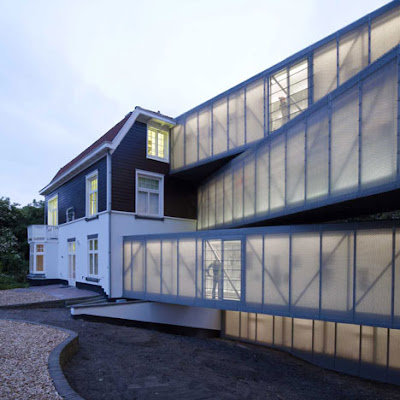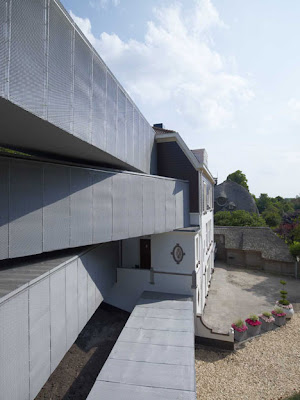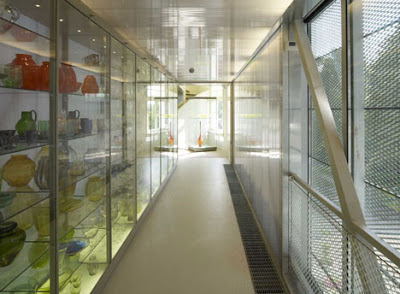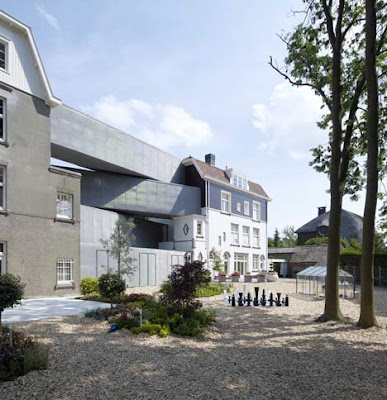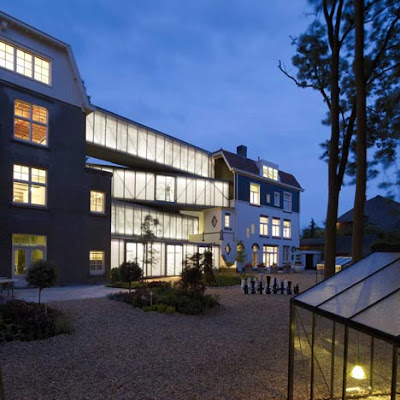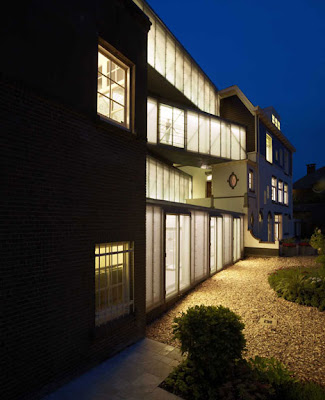National Glass Museum Holland by Bureau SLA
The Dutch National Glass Museum collects, examines and exhibits glass art and design from 1850 onwards. It serves as the Netherlands’ treasury, laboratory and centre of knowledge on glass. The Glass Museum was started in 1953 in the house of Petrus Marinus Cochius, director of Leerdam glass manufacturers and founder of the Leerdam glass tradition.
Having two villas is charming, but provides the visitor with nothing else than to walk from one small room to another. By linking the two buildings, continuous exhibition rooms are created. The connection is more than a corridor; it is display space itself and becomes part of the visitor’s experience. Furthermore, the connecting bridges serve as the museum’s storage space. This open storage is fully accessible, making the National Glass Museum the Netherland’s first museum to give public access to its complete collection.
Exhibition spaces are spread across both existing buildings and the bridges with 9000 objects on display in glass cabinets by Dutch designer Piet Hein Eek
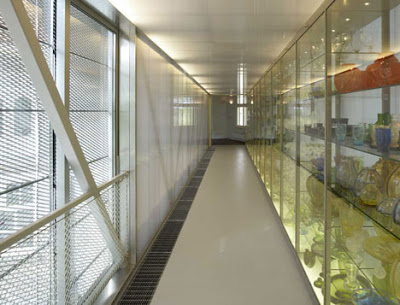
Both buildings have been refurbished with one housing a restaurant and the other a library that doubles as staff offices.
The New National Glass Museum in Leerdam
Once the villa on Lingedijk 30 had been acquired, bureau SLA were commissioned to turn the two buildings into a home for the National Glass Museum. It was suggested to turn Cochius’ former residence into an exhibition area and to use the second villa as offices, storage facilities and a cafeteria.
Whilst this fulfilled functional requirements, it seemed like a missed opportunity to us at bureau SLA, as the new situation would appear to be not very different from the old one. The museum would have more space, indeed, but this would not be visible from the outside
The four pedestrian bridges that bureau SLA designed draws everything together in an elegant manner. Visitors can idle through extensive rooms; only one lift is needed and an enormous amount of space is gained. The bridges serve as storage space in which all the museum’s objects are on display, in cases specifically designed for the museum by Piet Hein Eek.
In the historical villas not much more needed to be done; they were elegant by themselves. Repairs were carried out where needed, with some later additions removed. The bridges were constructed from several layers of polycarbonate panels and covered by a translucent skin of grey, powder-coated, aluminium mesh. During the day they contrast sharply with the refined old villas, whereas at night they glow in reflection of the 9000 glass objects inside them.
